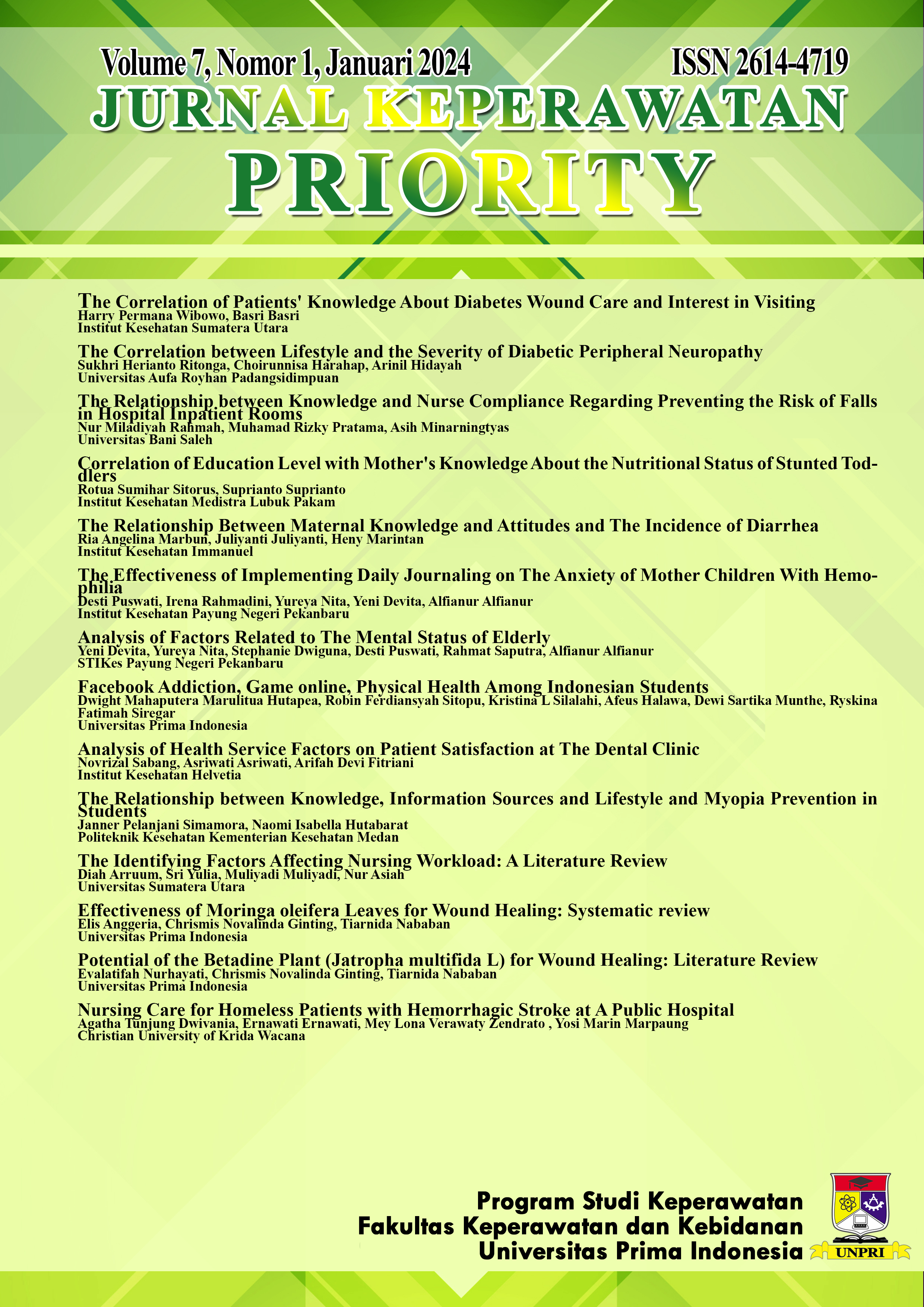Nursing Care for Homeless Patients with Hemorrhagic Stroke at A Public Hospital
DOI:
https://doi.org/10.34012/jukep.v7i1.4522Keywords:
homeless patient, hemorrhagic stroke, nursing careAbstract
A hemorrhagic stroke occurs when a blood vessel in the brain bursts, causing bleeding in the brain tissue. A hemorrhagic stroke can have a significant impact on the patient. Family support has been shown to influence the success of treatment for hemorrhagic stroke patients. Therefore, Family support is substantial and linked to achieving patient independence. Homeless stroke patients typically receive minimal care and have high mortality rates. This paper aims to review the implementation of care for homeless patients with hemorrhagic stroke in a public hospital in Jakarta. This article is a case report of a homeless 65-year-old man with decreased consciousness who was diagnosed with hemorrhagic stroke. The data were obtained by physical assessment. Several diagnostic tests were performed, including CT scan, MRI, and blood tests. A student nurse working one shift per day provided nursing care for three days. The patient had limb paralysis and drowsiness. The priority diagnoses were ineffective cerebral tissue perfusion, impaired physical mobility, and deficits in self-care. Nursing care focuses on the patient's consciousness and fulfilling basic needs. After 3 days of care, the patient was still unconscious. However, there were no symptoms of increased intracranial pressure. Family participation is necessary for the care of patients with hemorrhagic stroke. The nurse's role as a caregiver becomes primary and crucial for homeless patients who have no family.
Downloads
Published
How to Cite
Issue
Section
License
Copyright (c) 2024 Agatha Tunjung Dwivania, Ernawati Ernawati, Mey Lona Verawaty Zendrato , Yosi Marin Marpaung

This work is licensed under a Creative Commons Attribution 4.0 International License.
Authors who publish their manuscripts through the Journal of Keperawatan Priority agree to the following:
- Copyright to the manuscripts of scientific papers in this Journal is held by the author.
- The author surrenders the rights when first publishing the manuscript of his scientific work and simultaneously the author grants permission / license by referring to the Creative Commons Attribution 4.0 International License to other parties to distribute his scientific work while still giving credit to the author and the Journal of Journal Keperawatan Priority as the first publication medium for the work.
- Matters relating to the non-exclusivity of the distribution of the Journal that publishes the author's scientific work can be agreed separately (for example: requests to place the work in the library of an institution or publish it as a book) with the author as one of the parties to the agreement and with credit to sJournal ofJournal Keperawatan Priority as the first publication medium for the work in question.
- Authors can and are expected to publish their work online (e.g. in a Repository or on their Organization's/Institution's website) before and during the manuscript submission process, as such efforts can increase citation exchange earlier and with a wider scope.

















